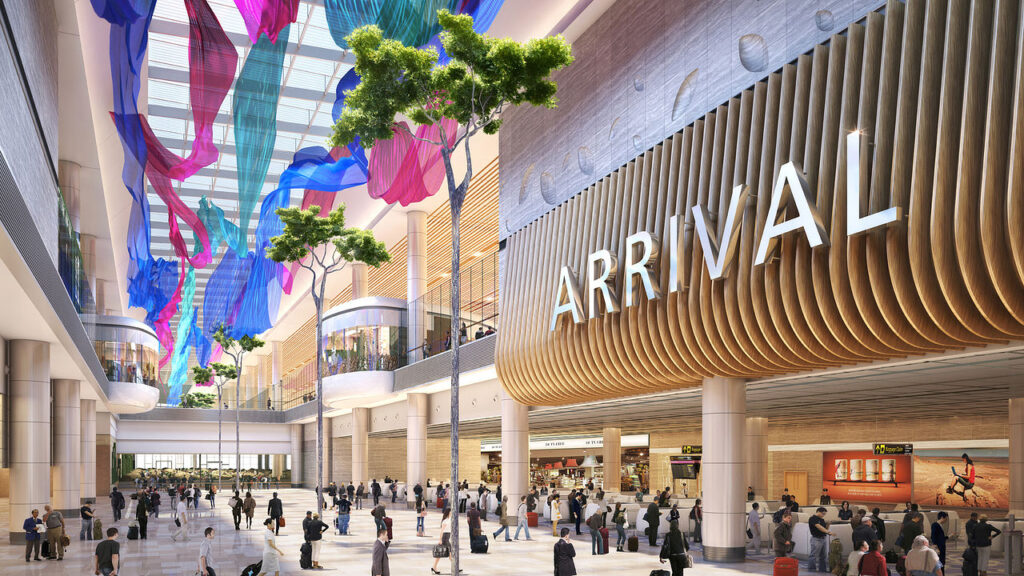Standing in immigration queues ranks among travel’s least enjoyable experiences, somewhere between middle seats and overpriced airport sandwiches.
However, some airports have transformed the traditionally tedious border crossing process into something approaching efficiency and even pleasantness.
Best Airports for Immigration
The Skytrax 2025 rankings for the world’s best airport immigration services reveal which airports have mastered the balance of security with passenger convenience.
1. Hong Kong International Airport (HKG)
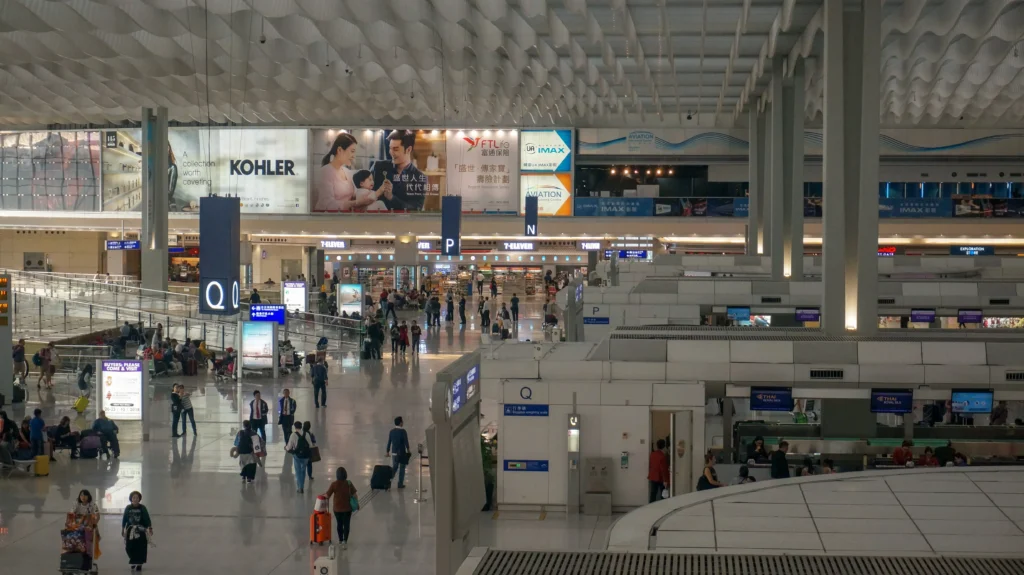
Hong Kong International Airport (HKG) has claimed the title of World’s Best Airport Immigration Service in 2025, establishing itself as the benchmark for efficient border control operations.
The airport’s immigration excellence begins with its advanced e-gate system, which processes eligible passengers in under 12 seconds while maintaining rigorous security standards. The airport features multiple automated immigration lanes equipped with facial recognition technology and biometric scanners. Their smart queuing system utilises real-time data analytics to predict passenger flow patterns and dynamically adjust staffing levels throughout different times of day.
What distinguishes Hong Kong is its multilingual staff capability and cultural sensitivity training programs that ensure immigration officers can effectively communicate with travellers from diverse backgrounds.
2. Singapore Changi Airport (SIN)
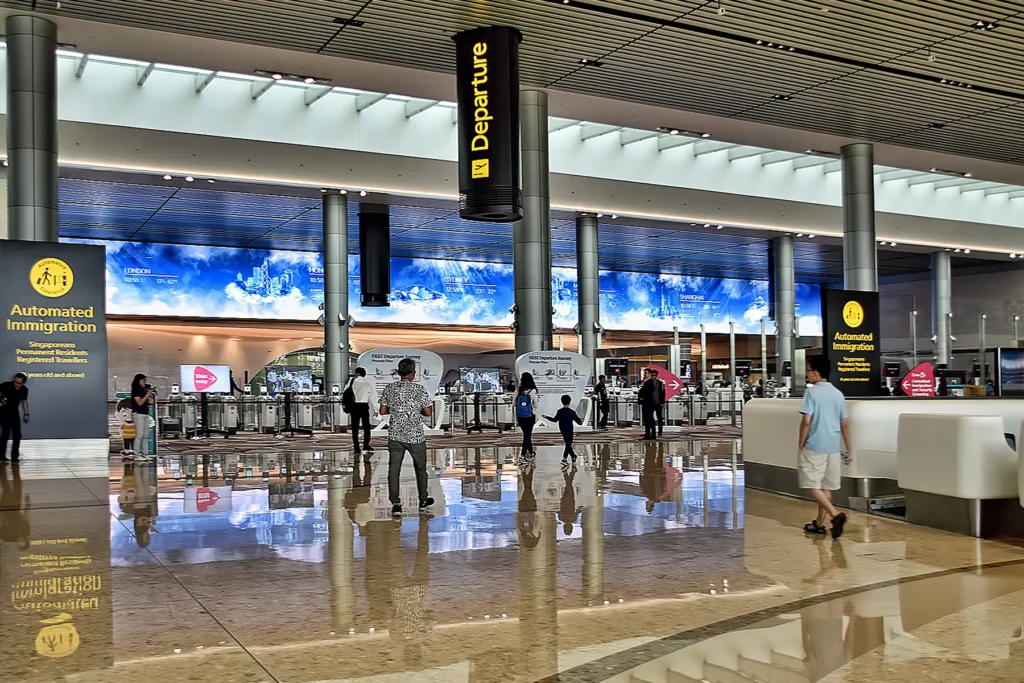
Singapore Changi Airport (SIN) secures second place with its innovative immigration system that exemplifies Singapore’s reputation for technological advancement and operational excellence.
Changi’s e-gate system accommodates multiple passport types and includes advanced document verification technology that reduces manual inspection requirements.
Their immigration officers undergo extensive customer service training that emphasises efficiency without sacrificing courtesy, creating a welcoming atmosphere for international travellers.
The airport’s transit passenger processing is particularly impressive, with dedicated lanes that allow connecting passengers to clear immigration quickly without compromising security protocols.
3. Bahrain International Airport (BAH)
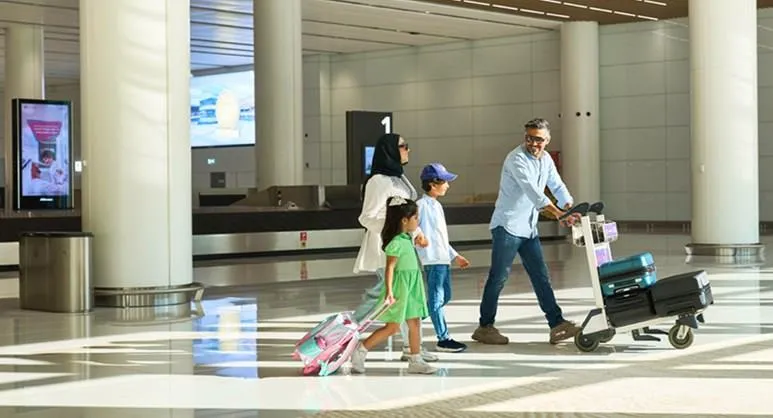
Bahrain International Airport (BAH) earns third place through its strategic focus on creating a passenger-friendly immigration experience that serves as a model for the region.
The airport’s immigration success lies in its efficient resource allocation and staff deployment strategies. Bahrain’s officers are known for their professional demeanour and multilingual capabilities, essential for serving their diverse international passenger base.
Their e-gate technology accommodates various passport formats while their manual processing lanes feature streamlined procedures that minimise delays.
Bahrain’s immigration area design optimises passenger flow with clearly marked lanes for different traveller categories and efficient queue management systems.
The airport’s size advantage allows for personalised attention. Its strategic location requires sophisticated systems to handle complex routing and documentation requirements for passengers from multiple regions.
4. Taiwan Taoyuan International Airport (TPE)
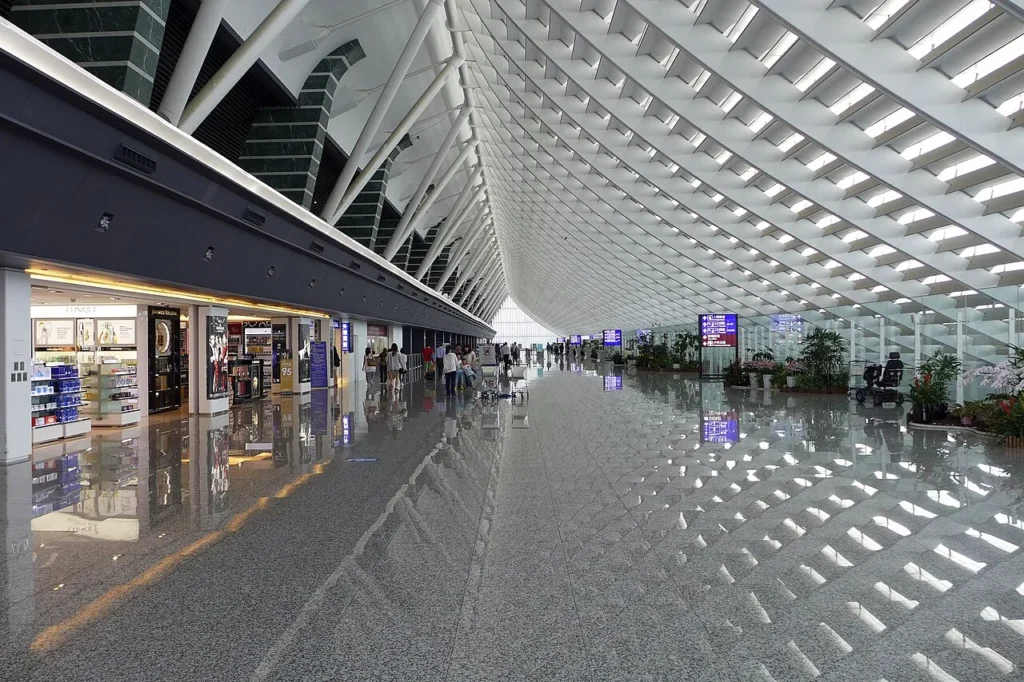
Taiwan Taoyuan International Airport (TPE) claims fourth place with its comprehensive immigration system that combines technological innovation with traditional Asian hospitality values.
Taoyuan’s e-gate system features advanced biometric technology that expedites processing for eligible travellers while its manual lanes maintain efficient throughput rates.
The airport’s immigration officers receive extensive training in customer service excellence, cultural awareness, and conflict resolution, ensuring positive interactions even during challenging situations.
The airport’s immigration facilities feature modern design elements that create a welcoming atmosphere, including natural lighting, comfortable waiting areas, and clear directional signage.
Taoyuan’s system efficiently handles transfer passengers with dedicated processing areas that minimise connection times while maintaining security requirements.
5. Zurich Airport (ZRH)
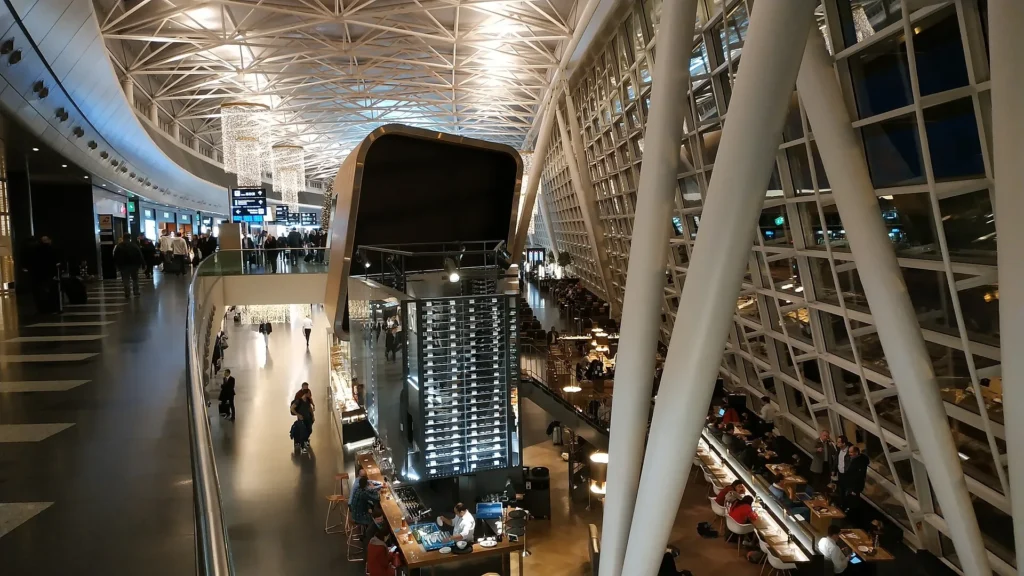
Zurich Airport (ZRH) secures fifth place by applying legendary Swiss precision to immigration operations, creating a system that functions with clockwork reliability.
The airport’s immigration services benefit from Switzerland’s central European location and the country’s tradition of excellent customer service.
Zurich’s immigration processing emphasises efficiency and accuracy, with officers trained to handle the complex documentation requirements of international business travellers and tourists.
Their e-gate system accommodates European Union passengers while maintaining separate, efficient lanes for non-EU travellers. The airport’s multilingual staff capabilities reflect Switzerland’s diverse linguistic landscape.
6. Helsinki-Vantaa Airport (HEL)
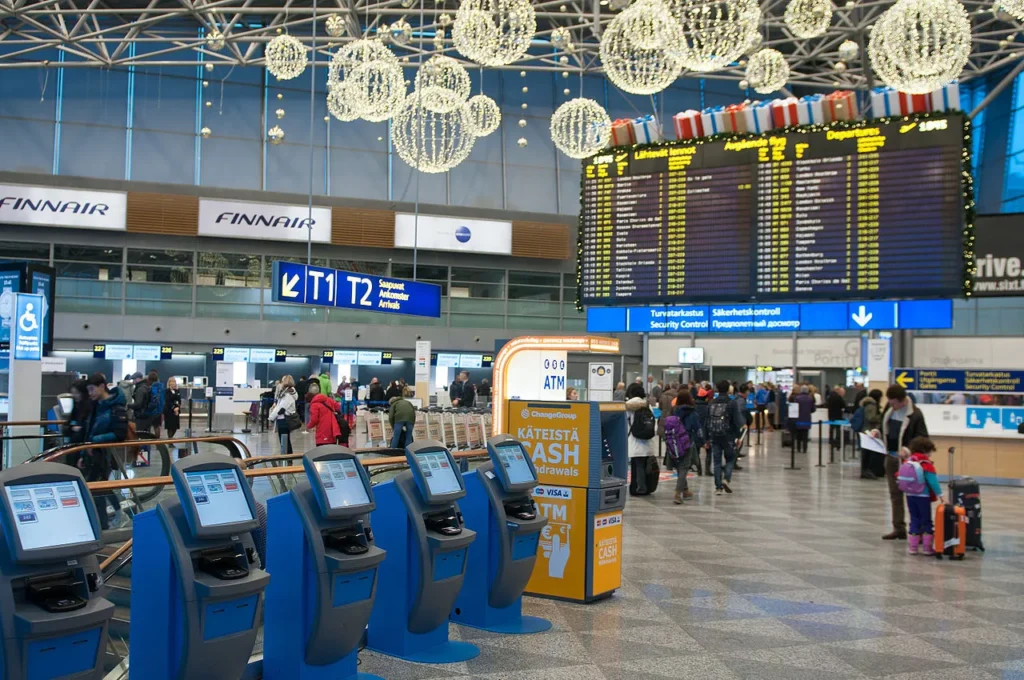
Helsinki-Vantaa Airport (HEL) earns sixth place with its characteristically Nordic approach to immigration services that emphasises simplicity, efficiency, and passenger dignity.
Helsinki’s immigration officers are renowned for their professional competence and courteous demeanour, reflecting broader Finnish cultural values of respect and efficiency. Their processing systems accommodate both EU and non-EU passengers with dedicated lanes that minimise wait times while maintaining thorough security checks.
Helsinki’s system effectively handles transfer passengers, particularly those travelling between European and Asian destinations, with streamlined procedures that facilitate quick connections.
7. Rome Fiumicino Airport (FCO)

Rome Fiumicino Airport (FCO) claims seventh place with its immigration services that successfully balance Italy’s role as a major European tourism destination with efficient border control operations.
Fiumicino’s immigration system features multiple processing lanes equipped with modern technology and staffed by officers trained in customer service excellence.
Their multilingual capabilities are essential for serving diverse tourist populations, while their efficiency ensures that business travellers experience minimal delays.
Fiumicino’s system effectively manages seasonal tourism peaks while maintaining consistent service quality throughout the year.
8. Seoul Incheon International Airport (ICN)
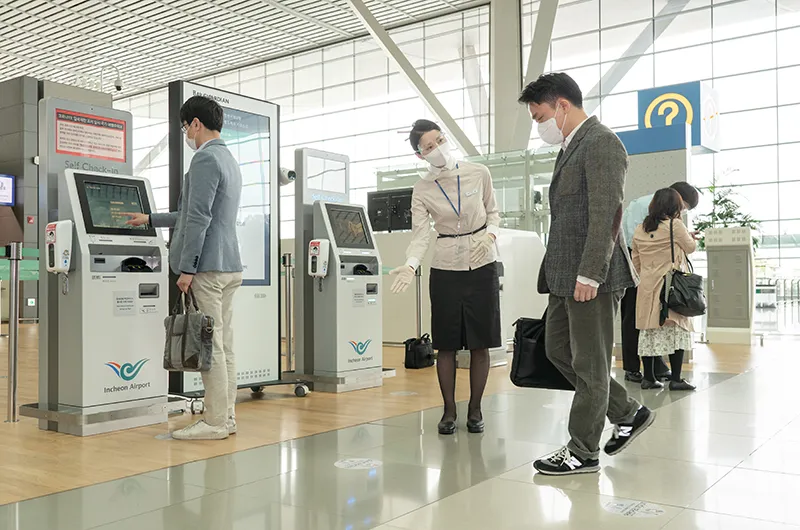
Seoul Incheon International Airport (ICN) secures eighth place through its technology-focused immigration system that reflects Korea’s reputation for digital innovation. The airport’s immigration services combine advanced automation with traditional Korean customer service values.
Incheon’s e-gate system features sophisticated biometric technology and rapid processing capabilities that significantly reduce wait times for eligible passengers. Their immigration officers receive comprehensive training in customer service and cultural sensitivity.
Incheon’s system effectively handles both tourist and business travellers, with specialised lanes that accommodate different passenger needs and documentation requirements.
9. Doha Hamad International Airport (DOH)

Doha Hamad International Airport (DOH) earns ninth place with its immigration system designed to serve as a major connecting hub between Europe, Asia, and Africa.
Hamad’s immigration officers are trained to handle diverse passenger populations and complex documentation scenarios common in international hub operations. Their processing systems feature modern technology and efficient procedures that minimise delays for both arriving and transit passengers.
The airport’s immigration area design reflects Qatar’s commitment to luxury and efficiency, with comfortable waiting areas and clear signage that guides passengers through the process.
10. Jakarta Soekarno-Hatta International Airport (CGK)

Jakarta Soekarno-Hatta International Airport (CGK) rounds out the top 10 with its improved immigration services that reflect Indonesia’s growing importance as a tourist and business destination.
Jakarta’s immigration system has evolved to handle increasing international passenger volumes while maintaining security standards appropriate for the region’s largest economy.
Their officers receive ongoing training in customer service and efficiency, with particular emphasis on serving diverse international travellers.
Jakarta’s system reflects Indonesia’s commitment to improving tourism infrastructure while maintaining appropriate security measures.
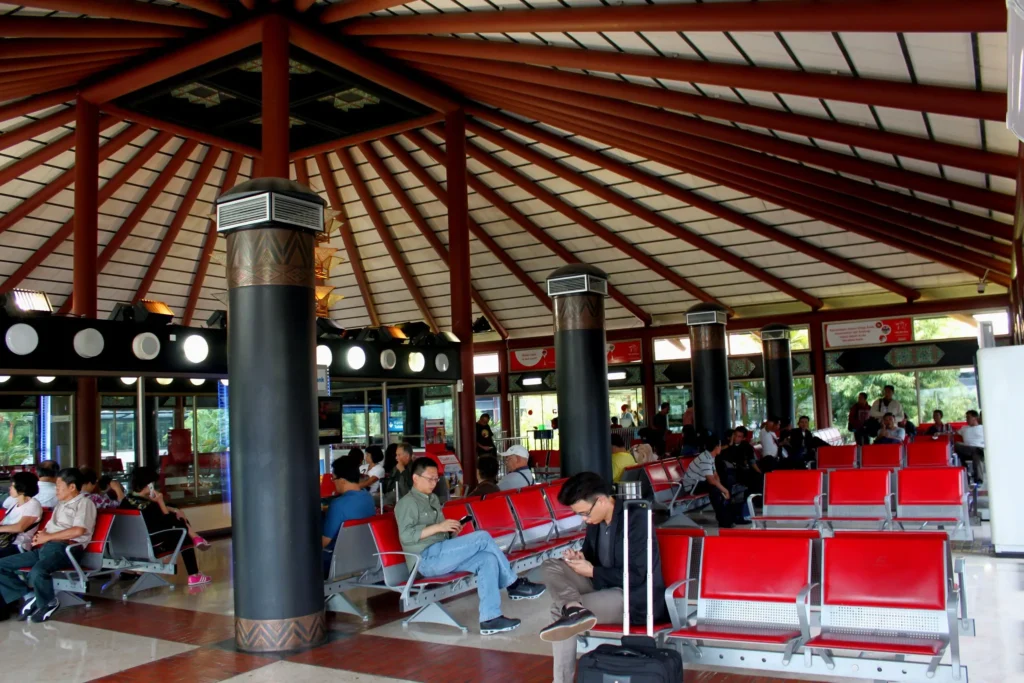
Bottom Line
These 10 airports have elevated immigration processing from a necessary bureaucratic hurdle to a streamlined gateway experience that sets the tone for travellers’ journeys.
While immigration queues may never become anyone’s favourite airport activity, these airports prove that efficient systems, courteous staff, and smart technology can transform border crossings from ordeals into merely brief interludes.
In an increasingly connected world, these airports demonstrate that international travel’s first and last impressions don’t have to involve lengthy waits and frazzled nerves.
Stay tuned with us. Further, follow us on social media for the latest updates.
Join us on Telegram Group for the Latest Aviation Updates. Subsequently, follow us on Google News

